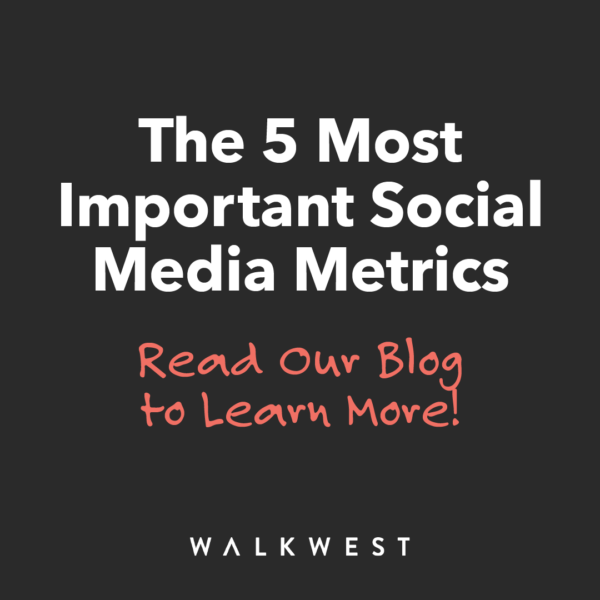The end of the year is the perfect time to review your social media campaigns, see what worked well, and find out what needs to be revised. Whether you’re reviewing your strategy or creating a new one, you should never jump in blind. As you plan, set up, execute, and review your posts, you should have data handy to inform your campaigns and use as a benchmark.
If you’ve been running your brand’s social media accounts for more than a year, you should have plenty of data to pull from. When setting up your strategy, take advantage of your experience. See what posts have done well, which have garnered the most impressions, and which ones just didn’t land as you brainstorm what you’re going to do for the year ahead.
Here are the five social media metrics you need to include in your planning — and what you can do to improve them in 2024.
Impressions
An impression is counted whenever a person views your post. That means that post was delivered to someone’s feed and they looked at it. This does not mean that the person engaged with your post, just that they saw it. There are three types of impressions depending on the type of social content you’re promoting: organic, paid, and viral.
An organic impression is how many times your organic social post was viewed. A paid impression is how many times your paid content was viewed. A viral impression is the number of times content from your account was shared in a story published by someone else.
If you find that your impressions have taken a dip, you might not be posting frequently enough for platforms to prioritize your content to new users. Try setting a consistent posting cadence that is sustainable to maintain and stick to it. Results may not be instant, but over time your Impressions will rise.
Engagements
Social media engagement refers to any time a user interacts with your content online. This can include likes, comments, and shares. Measuring engagement for your social media account is a good way to know how often people are engaging with your content — whether it’s worth clicking on, viewing the ‘read more’ button on longer posts, commenting on, or sharing to their own feeds.
You are able to view most engagement metrics for your account on all the major social media platforms: Facebook, Twitter, Instagram, and LinkedIn.
Not getting as many engagements on our content as you’d hoped? Conduct an audit of your accounts to see what topics and post types historically perform well for you and focus your efforts on creating similar content.
Clicks
Clicks are an extremely important metric, especially if you’re sharing a lot of content that links out to your website. A click is defined as just that: when someone clicks on the link provided in your organic social post.
For most brands, a click is one of the most valuable social media metrics. Chances are, your brand has shared a link to an interesting blog or web page on your site at least once.
If you’re not seeing the amount of clicks you’d like to on your organic social media content, take a look at what kind of Calls-to-Action (CTAs) you’re using. Make sure you’re encouraging users to click the link in the post or in your bio. A strong CTA can make a huge difference when it comes to getting people off of social platforms and onto your website.
Engagement Rate
Engagement rate refers to how often people are engaging with your social media content. A high engagement rate means that you’re doing a good job at putting out interesting content that your audience wants to click on, view more of, comment on, and share. What constitutes a good engagement rate differs by platform, so it’s important to explore metrics for each individual social media account.
Boosting an organic social media post can be a good way to increase your engagement rate across your page. If your engagement rate is sitting lower than industry average or isn’t otherwise hitting your set goals, try boosting it. Putting as little as $100 into boosting a high-performing post can help bring engaged users to your account.
Followers
How many followers your account has, and how often new accounts start following you, is a metric to look out for in 2024. However, it’s important to note that different types of followers can differ in value. For example, would you rather have 25 interested followers who regularly like and engage with your content or 200 spam bot accounts?
Not gaining followers as quickly as you expected? It can be easy to focus on how your follower count stacks up to that of your competitors, but don’t get hung up on the number. Having a smaller, highly engaged following will always be better than a large follower base that never interacts with your content.
If you’re wanting to increase your follower count the old fashioned way (organically), make sure that your account name is SEO friendly. It should give users a clear idea of who you are and what your brand is. You should also write descriptive posts, use trending hashtags, and engage with the content posted by accounts you follow.
Plan and Execute Smarter Social in 2024
Using past performance metrics to plan for the future is a smart way to set strategy — especially if your account has been around for a while. After all, social media is equal parts art and science. And good scientists don’t begin new experiments without using the data available to them.
Want to set a social media strategy but not sure where to begin? We can help with that. Reach out to us today for more information about creating organic social media strategies for your brand.

